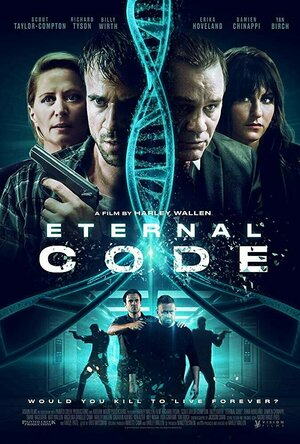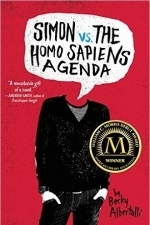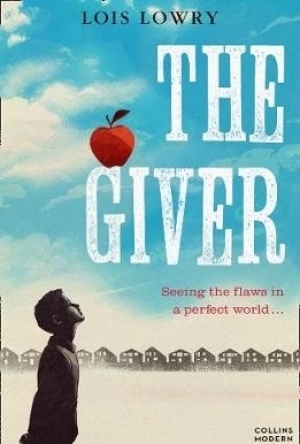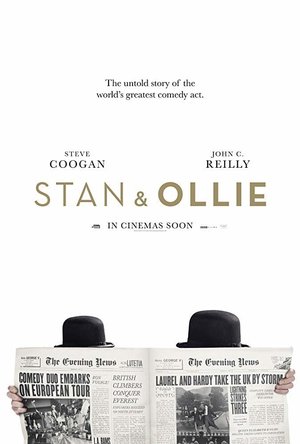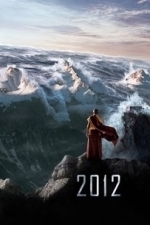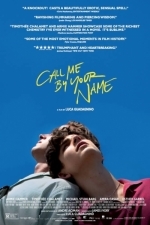Darren (1599 KP) rated Eternal Code (2019) in Movies
Sep 13, 2019
Performances – This is a movie that does try to use the biggest names to sale the movie, Scout Taylor-Compton being the biggest name in the film, even though she is mostly just a criminal thug, she doesn’t give us a bad performance, just she isn’t really a main character. Damien Chinappi would be one of the leads in the film as the he does bring us a performance that does fit the action side of the film, where we do feel sympathy for his character. Richard Tyson will always make for a great villain and this is no different. When we look at the rest of the cast, we see solid performances across the board.
Story – The story here follows the events of a kidnapping which takes a turn, when a war veteran looks to help the helpless, while a corrupt businessman looks to complete a project which will change everything as we know it in the world. When it comes to the idea of the kidnapping side of the story, we do get a nice spin on how everything unfolds, making it truly unpredictable with what will happen next. While that is a good thing, it can mean we do meet a couple of too many characters, which doesn’t let other get flushed out enough. We are left with seeing just how dealing with inventions will see people looking for greed, while seeing a war veteran getting another shot to prove himself in combat is nice to see.
Action – The action is restricted, but it does show how the conflicts are meant to be edgy and more in the shadows which is better to watch for the tone.
Settings – The film is set in and around one city which shows how the minds in it would operate, we see how the project would be secretly locked away from the world and see how the criminals will act in the shadows of abandoned locations.
Scene of the Movie – Corey military trained scenes.
That Moment That Annoyed Me – It does feel like we have a few too many characters at time.
Final Thoughts – This is an action thriller that does have a lot of direction you wouldn’t normally see, it does keep us guessing despite having a couple of characters we don’t need to have.
Overall: Action film that goes down different paves.

TimeStamps - Time Recording with Ease
Productivity and Business
App
TimeStamps makes it easier to have a look at your working hours and overtime. No more guessing when...

Coach's Eye - Video Analysis
Sports and Health & Fitness
App
Video doesn't lie. Get Coach's Eye today and see your performance improve immediately! ...
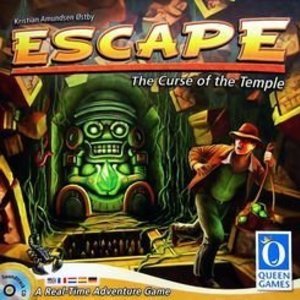
Escape: The Curse of the Temple
Tabletop Game
Escape: The Curse of the Temple is a cooperative game in which players must escape (yes...) from a...
pheebs (3 KP) rated Simon vs. the Homo Sapiens Agenda in Books
Nov 23, 2017
‘The love child of John Green and Rainbow Rowell’ – Teen Vogue
“The best kind of love story.”—Alex Sanchez, Lambda Award-winning author of Rainbow Boys and Boyfriends with Girlfriends
This book is a whirlwind of emotions, as soon as I finished scouring its pages I felt as if I had to read the book all over again, I did then abruptly lent it to a friend who found it just as amazing as I did. It’s a heartfelt story which really seems to capture the essence of being a teen in modern-day society, dealing with our problems, our worries, our trials and tribulations.
The main character is Simon, a boy who is finding life hard, with an overly happy family who like to be very involved and love to talk openly about their feelings, something that Simon is finding increasingly hard more specifically with his sexual preferences. The protagonist of the story is an unlikely fellow who creates dilemmas in Simon’s mind as he wishes to save his previous ‘Blue’. Simon is surrounded by bountiful characters that link smoothly into to his life an thoughts in a normal manner. We learn about his family through his fond memories and thoughts as well as the conversations they exchange in the book, the same can be said for his closest friends. He has three friends that stand out as more prominent characters, the book also focuses on how his relations with them change and how it affects them.
The book is written in a subjective narrative, it tells us only the information that Simon knows so that we know no more or less than him, equating to us having a possibly bias view towards certain characters, thus once again making it more realistic. It deals with problems that teens struggling with their sexuality in day-to-day life face both in the real world and the cyber one. It reveals to us just how hard it is to control information that gets leaked out onto the internet, how fast it can spread and change your life in the ‘real’ world. Your life can be drastically altered by a few words and a persons malicious intentions and this book helps prove just how down heartening it can be as well as focusing on the light at the other end of the tunnel.
All of the characters play great roles in Simon’s life, he lives in a very open family so he feels as if he is keeping something terrible from them especially with of hand comments that his fathers sometimes makes. We read about different things in his life that he loves such as drama, as he attends school play rehearsals often.he deals with the struggles of maintaining friendships under pressure.
I would recommend this book to anyone no matter their age, race, gender or sexual preference. It’s a romantic coming of age comedy that warms me to my toes making me wanting to keep reading over and over again (as I have done many a time). If you liked ‘Will Grayson, Will Grayson’ by John Green and David Levithan then you will most definitely enjoy this book.
<i>I received this book for free through Goodreads First Reads.</i>
It has been over twenty years since Lois Lowry’s controversial children’s story <i>The Giver</i> was published and it certainly deserves its status as an essential modern classic. Jonas has grown up in the perfect world of the Community whose survival relies on strict rules and rituals. Adults are assigned spouses and children (one boy and one girl) as they take up their role within the society. At the beginning of the book Jonas is approaching then end of his eleventh year and feeling apprehensive about the Ceremony of Twelve where he will be assigned a job for him to do for the rest of his adult life. Jonas gets selected as the Receiver of Memory – a very rare position – and begins to experience memories from humans who lived a long time ago. For Jonas this is exciting until he begins to see the flaws in his perfect world.
Dystopian literature has become popular over the past few years and it would not be surprising if it were <i>The Giver</i> that inspired these contemporary works. Lowry claims that she did not intend for The Giver to have a sinister feel about it; she was writing an adventure story and exploring the concept of the importance of memory, but it turned out to be something much more thought provoking. As the children’s novelist Margaret Mahy (<i>The Haunting</i>) pointed out, up until the publication of this novel in 1993 Lowry was best known for her funny stories about Anastasia Krupnik resulting in <i>The Giver</i> being even more shocking and unexpected.
<i>The Giver</i> highlights that attempting to produce perfection can often result in the loss of good things as well as the bad. The notion of the ideal world may seem like a wonderful proposal, but in order to achieve it humans would have to do away with free choice as in ironing out the inequalities and injustices of the present world would result in everything becoming the same for each individual.
This is a difficult concept to grasp, particularly for a child. Although intended as a children’s series, <i>The Giver</i> and its following installments are more suitable for young adults and older. The only issue with this is that the writing style was target at a younger audience meaning that the overall story is short and lacks depth. If it were to have been written for older readers then there would have been the scope for it to become a much lengthier novel.
There are a lot of mixed reviews surrounding this book although they have changed greatly since the original publication. To begin with <i>The Giver</i> was banned in some areas however the dystopian theme has become accepted in today’s society. What many people comment on now is the oversimplification of such strong ideas. Then again, as already mentioned, it needs to be emphasized that this book was aimed at children, thus the language reflects the reading skills of its target audience.
<i>The Giver</i> is a gem of a book that not only is enjoyable but also can educate the reader on the dangers of attempting a utopian society and why it is important to retain human memories – even the bad – in order that wisdom can exist. Those who have become fans of contemporary dystopian novels, for example <i>Divergent</i> by Veronica Roth or <i>Delirium</i> by Lauren Oliver, will be sure to love this series.
Lucy Buglass (45 KP) rated Stan & Ollie (2018) in Movies
Jun 20, 2019
Something that really made me smile about Stan & Ollie was the fact that both Steve Coogan and John C. Reilly’s careers are rooted in comedy. Coogan is known for playing Alan Partridge and Reilly is known for numerous roles in American comedy films. What better way to pay homage to such an iconic comedy act. Both lead actors took to their roles superbly, and I loved both equally. It was a joy to follow them as they took us on tour, recreating iconic routines that made it impossible to look away from the screen.
I was captivated throughout, genuinely finding myself laughing out loud at these comedy routines that have aged like a fine wine. Even now, they’re absolutely hilarious. Coogan and Reilly worked perfectly together, embodying all that we know and love about Laurel and Hardy whilst revealing intimate secrets that took place from behind the stage curtain. Although their careers were comedic, some of their life experiences certainly weren’t.
The duos wives also make an appearance, and are equally as delightful to watch. Lucille Hardy (Shirley Henderson) and Ida Kitaeva Laurel (Nina Arianda) are a double act themselves, with very different beliefs and personalities. I loved the dynamic between the two women and found myself laughing out loud at them too. Despite their differences, they are both overbearing wives who think they know what’s best for their respective husbands, often with some very emotional results. I really can’t fault the casting at all, it was just magical to watch.
Aesthetically, I adored Stan & Ollie and what a treat it was to see Newcastle back in the day! The set and costume design is just gorgeous as the two embark on a rather exhausting tour of the UK, and we get a glimpse of so many cities and the different audiences that attend each night. We see the duos struggles and successes, each scene delivering a different emotional tug. Our heart sinks as we see the empty seats, and rises again as they start to draw in more and more crowds. The camera speaks louder than words a lot of the time, knowing exactly what to show the audience in order to mirror what the characters are feeling.
It is impossible to document every waking moment of Laurel and Hardy’s lives, but this biopic still manages to show us a lot in a relatively short space of time. With a runtime of 1 hour and 37 minutes, it would have been easy for it to fall flat and leave audiences wishing they’d seen more. But in my opinion, that didn’t happen. Whilst we were dropped into the story with their careers in full swing, it didn’t feel like we’d missed out on anything. The film requires a little knowledge about the duo before watching, but you don’t need a history lesson in order to enjoy it to the full.
For me, this was the epitome of a great biopic. Coogan and Reilly looked the part, they acted the part, and they made their audience laugh both on-screen and in the cinema. I laughed, I cried, and I had a brilliant time that I can see myself wanting to revisit in the near future. The epilogue was so emotionally charged that I had to stay in my seat and wipe away tears for a few minutes, and that says everything about what a perfect film this was. I’m delighted that it is my first five star review of 2019!
https://lucygoestohollywood.com/2019/01/25/a-stunning-portrait-of-friendship-and-comedy-my-review-of-stan-ollie/
Gareth von Kallenbach (980 KP) rated 2012 (2009) in Movies
Aug 8, 2019
In the new film “2012” director Roland Emmerich follows up his other end-of-the world epics “Independence Day” and “The Day After Tomorrow”, with a story about the total devastation of the earth and all life upon it due to an increase of neutrinos from the sun heating the earth’s core causing the displacement of the Earth’s crust.
Keeping to the established formula of the disaster films, 2012 centers around a struggling writer named Jackson Curtis (John Cusack), who learns of the pending catastrophic events while camping at Yellowstone National Park with his children. The presence of forbidden areas and swarms of soldiers and scientists leads Jackson to believe that the local conspiracy radio host Charlie Frost (Woody Harrelson), might be right in his predictions that we are all on borrowed time, and that the increase in earthquakes and fissures along the fault lines are a very bad omen.
Unbeknownst to Jackson, and the majority of the world’s population, U.S. President Wilson (Danny Glover), and his fellow heads of state, are preparing for the coming tragedy. Carl Anheuser (Oliver Platt) and a team of geologists lead by Adrian Helmsley (Chiwetal Ojiofore) are trying to determine exactly how much time they have to save what they can of humanity. Unaware that the fate of mankind is being decided by the politicians and those with money, Jackson and his children soon find themselves rushing to stay alive, with his ex-wife Kate (Amanda Peet), and her boyfriend in tow. Jackson learns of a plan to save select members of the population and pins their very survival on being able to arrive at what they hope is their salvation before time runs out.
Spectacular effects follow as Los Angeles and other cities are swallowed up by massive sinkholes and buried under collapsing bridges and buildings in some of the most amazing sequences of mayhem and destruction ever captured on film. The movie does an amazing job of showing the absolute calamity and chaos and does a passable job with the relationships between the characters. There are some nice supporting performances from Thandie Newton and George Segal. It is just a shame they were not given a bit more to work with. The cookie cutter scenarios that many characters faced seem to have been lifted from the book of disaster film plots.
I did not go into the film expecting realism, as I fully expect the world will go on as normal on December 22, 2012. However, I did have to note some of the absurd developments that strained any semblance of credibility the film may have had. One such scene had the characters being flooded and trapped for an extended period of time by water. Since their locale was near Mt Everest, I had to assume that it was not warm spring water they were submerged in, and had to wonder if hypothermia just went the way of most of the human populace.
Then again, we were dealing with a heated core that was essentially melting the earth’s crust. So maybe the water was warm.
As with all disaster movies, I do have to remember the audience is asked to suspend all disbelief, at least for 160 minutes. While the film does take some vast leaps of logic, there is enough good action, special effects, and strained levity to make this a good distraction, as long as you are willing to check your brain at the door and just enjoy the ride.
Kirk Bage (1775 KP) rated Call Me by Your Name (2017) in Movies
Mar 3, 2020
Continuing to catch up on Oscar nominated films of recent years I have missed, I went on holiday in 1982 Italy for 2 hours last night. There was culture, architecture, piano music, food, nature, and a big peachy dollop of sensuality – thinly veiled as dramatic cinema. It washed over me like a daydream! And if I say nothing really happens, I wouldn’t necessarily call it a criticism. It ambles along at such a languid pace at times, with such little conflict or incident, but to call it insignificant would be a disservice to the power of love at its palpable heart.
Essentially, it is a right of passage movie, that defies gloriously every hollywood habit of over egging the souffle. For minutes on end we watch Elio, the formidable natural talent of Timothée Chalamet, read a book, go for a swim, ride a bike, play the piano, or fuck some fruit, as he gradually descends into obsession, and ultimately love, for the older Armie Hammer as the aloof and seemingly worldly Oliver, his father’s research assistant for the Summer.
It feels for a long, long time like you might not care, such a tale of rich privilege as it is; but, by the final moments you do realise you have been drawn into the depth of feeling that is often hidden in plain sight, and that you may after all relate to the heartbreak contained in loving an idea of love and passion that is never attainable in reality. The self discovery of a passion within you as a life force is a melancholy reward in and of itself.
I know already that I must return to this film from time to time in a variety of moods, because it has a depth of subtlety that may catch me differently every time; and that is its main power. The key to which is Chalamet. His eyes and body language are so filled with hidden wonders that his words don’t always convey, that his work seems more like a strange dance than your average screen performance, that often simply takes the script and merely reads it aloud.
The remarkable career of Michael Stuhlbarg, as Elio’s father, is also noteworthy here. Take a look at how many great films he has now been a part of and gasp to think, oh wow, that is the same guy! His paternal speech to Elio at the end of this film was a highlight for me. Such gorgeous writing, that combines character with wisdom and weakness in a tapestry of care and regret. Just wonderful.
You know, I came into writing this review feeling that I had found the experience quite disposable and slight. That clearly isn’t the case. This is obviously a film you must watch again, meeting it where it wants to meet you. Not to mention I have always been a Sufjan Stevens fan, and found his contribution to the musical landscape near perfect. In conclusion, there is a banquet here masquerading as a taste of something sweet brushing the lips. I will be back for a second bite in time.

Kitchen Food Court Craze (NEW)
Games, Food & Drink and Stickers
App
Kitchen Food Court Craze: Cooking Simulation is a new free cooking games for kids and girls which...
